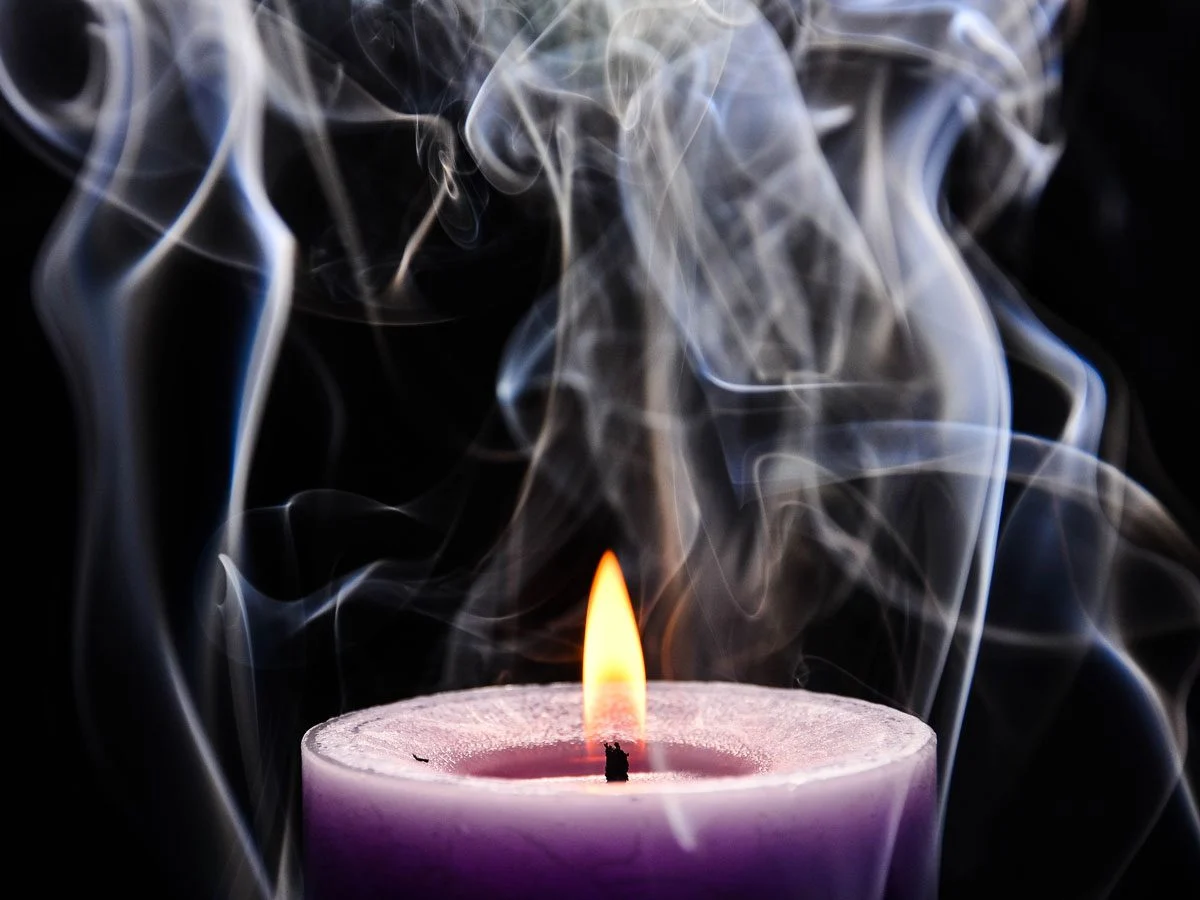

Articles
How Bad Are Candles For You
Modified: February 18, 2024
Discover the truth about articles on how bad candles are for your health. Uncover the hidden risks and learn how to protect yourself from harmful effects.
(Many of the links in this article redirect to a specific reviewed product. Your purchase of these products through affiliate links helps to generate commission for Storables.com, at no extra cost. Learn more)
Introduction
Candles have been used for centuries as a source of light, warmth, and ambiance. They come in a wide variety of shapes, sizes, and scents, making them a popular choice for creating a cozy atmosphere in homes and other spaces. However, while candles may be delightful to look at and smell, there are a few potential risks associated with their use.
It’s important to be aware of these risks to ensure the safety and well-being of yourself and your loved ones. In this article, we will explore the potential health effects of candles and what you can do to minimize any negative impacts.
One of the primary concerns with candles is the smoke they emit when burned. This smoke can contain various substances that may be harmful when inhaled, especially in enclosed spaces. The composition of the candle, including the wax and any additives or fragrances, can contribute to the release of potentially toxic compounds into the air.
In addition to the smoke, candles with fragrances can pose an additional risk. While they may smell delightful, the chemicals used to create these scents might not be so pleasant for your health. Certain fragrances can trigger allergic reactions, respiratory issues, and even headaches in some individuals.
Furthermore, studies have shown that some candles may contain lead in their wicks, which can release harmful levels of lead into the air when burned. Long-term exposure to lead can be toxic and has been linked to various health problems, particularly in children.
With all these potential risks in mind, it’s crucial to take appropriate safety measures when using candles in your home. By following some simple guidelines, you can enjoy the cozy ambiance they provide while minimizing any negative impacts on your health.
In the following sections, we will delve deeper into the potential health effects of candle smoke, the indoor air pollution they can cause, the toxicity of candle fragrances, and how to ensure safe candle usage. We will also explore alternative options to traditional candles that can provide a safer and healthier environment.
Key Takeaways:
- Candles can emit harmful substances, such as lead and volatile organic compounds, into the air when burned, posing potential health risks. Choosing natural, non-toxic candles and proper ventilation can minimize these effects.
- Safety measures, such as trimming wicks, proper ventilation, and using alternative options like LED candles, can help minimize the health risks associated with traditional candles. Prioritizing safety and informed choices can enhance the ambiance while ensuring a healthier environment.
Read more: Why Soy Candles Are Bad
Potential Risks of Candles
While candles are often associated with relaxation and ambiance, it is important to be aware of the potential risks they can pose. Here are some of the primary concerns related to candle usage:
- Smoke Inhalation: When candles burn, they release smoke into the air. This smoke can contain a range of harmful substances, including soot, volatile organic compounds (VOCs), and other toxic chemicals. Inhaling this smoke for prolonged periods can irritate the respiratory system, aggravate existing respiratory conditions, and contribute to indoor air pollution.
- Indoor Air Pollution: The smoke emitted by candles contributes to indoor air pollution. Studies have shown that the levels of indoor air pollutants, such as particulate matter, carbon monoxide, and VOCs, can be significantly elevated in spaces where candles are frequently burned. Long-term exposure to these pollutants can have detrimental effects on respiratory health and overall well-being.
- ToFragrance Sensitivities: Many candles are scented with various fragrances to create pleasing aromas. However, these fragrances can be problematic for individuals with sensitivities or allergies. Certain chemicals used in scented candles, such as phthalates, can trigger allergic reactions, headaches, and respiratory issues in sensitive individuals.
- Lead Exposure: In the past, some candles were made with wicks that contained lead. When burned, these candles released lead into the air, exposing individuals to this toxic heavy metal. While the use of lead wicks has significantly declined due to regulations, it is still essential to ensure that the candles you purchase are lead-free to prevent any potential lead exposure.
- Fire Hazard: Perhaps the most obvious risk associated with candles is the potential for fires. When left unattended or placed too close to flammable objects, candles can easily cause fires that can lead to property damage, injuries, or even fatalities. It is crucial to exercise caution and never leave a burning candle unattended.
Despite these potential risks, candle enthusiasts can still enjoy the cozy ambiance and soothing scents by taking some precautions. The following sections will explore ways to minimize the adverse effects of candles and create a safer environment for their use.
Health Effects of Candle Smoke
When candles burn, they release smoke into the air, which can have various health effects on individuals exposed to it. Here are some of the potential health concerns associated with candle smoke:
- Respiratory Irritation: The smoke emitted by candles contains fine particles, known as particulate matter, which can irritate the respiratory system. These particles can trigger coughing, sneezing, wheezing, and shortness of breath, particularly in individuals with pre-existing respiratory conditions, such as asthma or chronic obstructive pulmonary disease (COPD).
- Allergies and Sensitivities: Certain compounds found in candle smoke, such as VOCs and fragrance chemicals, can trigger allergic reactions and sensitivities in susceptible individuals. These reactions can manifest as nasal congestion, itchy eyes, skin irritation, and even asthma attacks.
- Headaches and Dizziness: The fumes emitted by candles, especially those with strong fragrances, can cause headaches, dizziness, and even nausea in some people. These symptoms may be more pronounced in individuals who are sensitive to certain fragrance chemicals or have a history of migraines.
- Potential Carcinogens: Some candles can release carcinogenic compounds when burned. For instance, certain types of candles made from paraffin wax, a petroleum-derived substance, can emit benzene and toluene, both of which are known carcinogens. Prolonged exposure to these substances may increase the risk of developing cancer over time.
It is important to note that the severity of these health effects can vary depending on factors such as the composition of the candle, the duration and frequency of exposure, and individual susceptibility. Additionally, individuals with respiratory conditions, allergies, or chemical sensitivities may be more vulnerable to the negative health effects of candle smoke.
To minimize these health risks, consider the following tips:
- Opt for candles made from natural, non-toxic materials, such as soy wax or beeswax, which tend to produce less smoke and soot compared to paraffin wax candles.
- Avoid candles with synthetic fragrances. Instead, choose candles scented with essential oils or labeled as “fragrance-free.”
- Ensure proper ventilation in rooms where candles are burned to reduce the concentration of smoke and pollutants in the air. Open windows or use fans to improve air circulation.
- Trim the candle wick to a quarter-inch before each use to prevent excessive smoke and soot production.
- Never burn candles in spaces with poor ventilation, such as small enclosed areas or near air vents.
- Consider using candle alternatives, such as flameless LED candles or electric wax warmers, which can provide a similar ambiance without the associated health risks.
By being mindful of the potential health effects of candle smoke and taking necessary precautions, you can continue to enjoy the cozy atmosphere that candles create while prioritizing your well-being.
Indoor Air Pollution from Candles
Candles, while providing a pleasant and soothing ambiance, can contribute to indoor air pollution. When candles burn, they release various substances into the air, including particulate matter, volatile organic compounds (VOCs), and potentially toxic chemicals. These pollutants can negatively impact indoor air quality and pose health risks for individuals exposed to them.
Here are some key factors contributing to indoor air pollution from candles:
- Particulate Matter: Candle smoke contains tiny particles known as particulate matter. These particles can be released into the air during the burning process and can range in size from visible soot to microscopic particles. Inhaling these particles can irritate the respiratory system and potentially contribute to respiratory issues, especially in individuals with asthma, allergies, or other respiratory conditions.
- Volatile Organic Compounds (VOCs): Many candles, especially scented ones, contain VOCs. These are organic chemicals that can vaporize at room temperature and contribute to indoor air pollution. VOCs can have both short-term and long-term health effects, including eye and throat irritation, headaches, dizziness, and even damage to the liver, kidneys, and central nervous system with prolonged exposure.
- Toxic Chemicals: Some candles may contain toxic chemicals that can be released into the air when burned. For instance, candles made from paraffin wax, which is derived from petroleum, can release chemicals such as benzene and toluene. These chemicals are known to be carcinogenic and can have negative effects on human health, particularly with chronic exposure.
To minimize indoor air pollution from candles, consider the following tips:
- Choose Natural Wax Candles: Opt for candles made from natural and non-toxic materials, such as soy wax or beeswax. These candles tend to produce less soot and release fewer harmful chemicals into the air compared to those made from paraffin wax.
- Avoid Scented Candles: Fragrances in candles often contain a mixture of synthetic chemicals that can contribute to indoor air pollution. Consider using unscented candles or those scented with essential oils to reduce exposure to potentially harmful VOCs. Alternatively, you can use essential oil diffusers or natural room sprays to create a pleasant aroma without burning candles.
- Keep Spaces Well-Ventilated: Use candles in well-ventilated areas. Open windows or use exhaust fans to improve air circulation and reduce the concentration of pollutants in the air. Proper ventilation can help dissipate candle emissions and maintain better indoor air quality.
- Trim Candle Wicks: Trim the wick of the candle to about a quarter-inch before lighting it. This helps prevent excessive smoke and soot production, reducing the amount of particulate matter released into the air.
- Clean Candle Jars: If you use candles in glass jars, regularly clean the jars to remove any accumulated soot or residue. This will help prevent the release of additional pollutants when you burn the candles.
By being mindful of the type of candles you use and taking steps to improve indoor air circulation, you can minimize indoor air pollution from candles and create a healthier living environment for yourself and your loved ones.
Toxicity of Candle Fragrances
Candles are often scented to enhance their appeal and create a pleasant atmosphere. However, it’s important to understand that candle fragrances can potentially pose a risk to our health. Many fragrance chemicals used in candles are synthetic and can emit harmful compounds when burned, leading to indoor air pollution and potential health issues.
Here are some key points regarding the toxicity of candle fragrances:
- Synthetic Fragrance Chemicals: Most commercially available scented candles contain fragrances that are created using synthetic chemicals. These chemicals can include phthalates, formaldehyde, benzene, and toluene, among others. Exposure to these chemicals can lead to various health problems, such as respiratory irritations, allergies, hormonal disruption, and even potential carcinogenic effects with long-term exposure.
- Volatile Organic Compounds (VOCs): Many fragrance chemicals used in candles are VOCs, which can be released into the air as gases when the candle burns. These VOCs contribute to indoor air pollution and can have both short-term and long-term health effects. High levels of VOCs can cause eye, nose, and throat irritations, headaches, dizziness, and even impact the central nervous system and other organs over time.
- Allergic Reactions: Fragrance chemicals in candles can trigger allergic reactions in sensitive individuals. These reactions can manifest as skin rashes, asthma attacks, nasal congestion, sneezing, and watery eyes. If you have a known sensitivity to certain fragrances or have a history of allergies, it’s essential to be cautious when using scented candles.
- Particulate Matter: Some fragrances can contribute to the release of particulate matter when candles burn. These fine particles can irritate the respiratory system and worsen existing conditions such as asthma and allergies. Particulate matter can also contribute to indoor air pollution and reduce overall air quality in your living space.
To reduce the potential toxicity of candle fragrances, consider the following tips:
- Choose Natural Fragrances: Look for candles scented with essential oils or labeled as using natural fragrances. Essential oils are derived from plant sources and often have fewer synthetic chemicals compared to artificial fragrance oils.
- Read Labels: Before purchasing scented candles, read the labels and avoid those that list “fragrance” or “perfume” without specifying the source. Look for candles made with natural fragrance ingredients and free from harmful chemicals like phthalates and parabens.
- Use Fragrance-Free Candles: If you’re concerned about potential health risks, consider using fragrance-free candles. These candles can still provide a cozy atmosphere and ambiance without the need for added fragrance chemicals.
- Opt for Natural Wax: Choose candles made from natural and non-toxic waxes, such as soy or beeswax. Natural wax candles tend to produce less soot and release fewer harmful chemicals, providing a safer alternative to traditional paraffin wax candles.
- Consider Alternative Aromatherapy Methods: Explore alternative methods for creating pleasing aromas in your space, such as using essential oil diffusers, natural room sprays, or potpourri made with dried herbs and flowers.
By being mindful of the potential toxicity of candle fragrances and opting for safer alternatives, you can enjoy a pleasant and cozy atmosphere in your home while prioritizing your health and well-being.
When burning candles, choose ones made from soy or beeswax to reduce indoor air pollution. Trim the wick to 1/4 inch to minimize soot and toxins.
Read more: How Bad Are Seed Oils For You
Lead in Candle Wicks
In the past, some candles were made with wicks that contained lead, which posed a significant health risk to those who burned them. When these candles were lit, the heat released the lead, allowing it to vaporize into the air. Inhalation of lead fumes or particles can lead to lead poisoning, which can have serious health consequences, especially for children and pregnant women.
While the use of lead wicks in candles has significantly declined due to regulations, it is still important to ensure that the candles you purchase are lead-free to prevent any potential lead exposure. Here are some key points to consider regarding lead in candle wicks:
- Regulations and Safety Measures: In many countries, including the United States, lead wicks in candles have been banned or restricted due to their toxicity. Candle manufacturers are now required to produce candles with lead-free wicks to ensure consumer safety. However, it’s still important to be vigilant and choose reputable candle brands that adhere to safety regulations.
- Health Risks of Lead Exposure: Exposure to lead can have severe health consequences. In children, lead exposure can lead to developmental delays, decreased IQ, learning difficulties, and behavioral problems. Adults can also experience adverse effects, including high blood pressure, fertility issues, nervous system disorders, and kidney damage.
- Symptoms of Lead Poisoning: If you suspect that a candle wick contains lead and you have been exposed to it, watch out for symptoms of lead poisoning. These may include abdominal pain, fatigue, headaches, irritability, memory loss, and muscle weakness. If you experience any of these symptoms, it’s important to seek medical attention to get properly diagnosed and treated.
- Safe Candle Usage: To ensure that the candles you purchase are lead-free, look for labels or certifications that indicate the absence of lead in the wicks. Check for reputable candle brands that prioritize safety and quality. Additionally, avoid purchasing candles from unknown sources or untrustworthy sellers, as they may not adhere to safety regulations.
- Proper Candle Disposal: When disposing of burned-out candles, it’s important to handle them safely. Avoid breaking or crushing the remaining wax or wick, as doing so may release any potential lead residue. Dispose of candles in sealed containers or bags to prevent any contamination and potential exposure. Consider recycling the candles and their containers whenever possible to reduce environmental impact.
By being aware of the potential risks associated with lead wicks in candles and taking necessary precautions, you can protect yourself and your family from lead exposure. Always remember to choose candles from reputable brands and look for the assurance of lead-free wicks to ensure a safe and enjoyable candle-burning experience.
Safety Tips for Candle Usage
While candles can provide a cozy and calming atmosphere, it’s essential to prioritize safety when using them. To minimize the risk of accidents and maintain a safe environment, follow these important safety tips:
- Never Leave Candles Unattended: It’s crucial to never leave a burning candle unattended. Always extinguish candles before leaving a room or going to bed. Even a momentary lapse in attention can lead to a fire hazard.
- Keep Candles Away from Flammable Materials: Make sure to place candles on heat-resistant surfaces and keep them away from flammable materials such as curtains, books, decor, or any other items that could catch fire. Ensure that candles are placed in stable holders or containers that won’t easily tip over.
- Keep Candles Out of Reach: Keep candles out of the reach of children and pets to prevent accidental burns or knock-overs. Place candles in areas where they cannot be easily accessed or knocked over by kids or pets.
- Avoid Drafty Areas: Avoid placing candles in drafty areas, as the airflow can cause the flame to flicker or flare, increasing the risk of accidents. Drafts can also blow lightweight materials into the flame, potentially causing a fire.
- Trim Candle Wicks: Before lighting a candle, trim the wick to approximately a quarter-inch in length. This helps prevent excessive flickering, soot, and smoke production. Longer wicks can also pose a fire hazard if they become too long and uncontrollable.
- Use Candle Snuffers: Instead of blowing out a candle, consider using a candle snuffer to extinguish the flame. Candle snuffers help prevent sparks, hot wax, or ignited materials from accidentally causing a fire.
- Set Up a Candle Safety Zone: Designate a safe area around the candle where there are no potential hazards. This zone should be free of flammable materials, liquids, or anything that could accidentally come in contact with the flame.
- Don’t Burn Candles to the Bottom: Avoid burning candles all the way to the bottom of the container or holder. Stop using the candle when there’s about a half-inch of wax remaining to prevent the container from overheating or cracking.
- Use Candle Alternatives: Consider using flameless LED candles or electric wax warmers as a safer alternative to traditional candles. These options provide a similar ambiance without the risk of an open flame.
- Understand Emergency Procedures: Make sure that you and your household members understand the location of fire extinguishers and know how to operate them. Also, have an evacuation plan in place and practice it regularly.
By following these safety tips and being responsible when using candles, you can enjoy the cozy and calming atmosphere they provide, while minimizing the risk of accidents or fire hazards.
Alternatives to Traditional Candles
If you are concerned about the potential risks and health effects associated with traditional candles, there are several alternatives available that can still create a cozy and inviting atmosphere in your space. Consider these safer options:
- Flameless LED Candles: Flameless LED candles are an excellent alternative to traditional candles. They provide a realistic flickering flame effect without the need for an open flame. LED candles are safe to use around children and pets, can be set on timers, and are available in various sizes and designs to suit any decor.
- Electric Wax Warmers: Electric wax warmers melt scented wax cubes using a gentle electric heating element. They release pleasant aromas into the air without the need for a flame. Electric wax warmers are safe, easy to use, and can be an effective way to enjoy fragrance in your home without the potential health risks of candle smoke.
- Essential Oil Diffusers: Essential oil diffusers use ultrasonic technology to disperse essential oils into the air as a fine mist. They not only provide a pleasant aroma but also offer therapeutic benefits depending on the oils used. Essential oils come in a wide variety of scents, allowing you to choose the ones that suit your preferences and mood.
- Natural Room Sprays: Natural room sprays are made with essential oils and water, providing a quick and convenient way to freshen up your space with pleasing scents. They are free from synthetic chemicals and can be used to add ambiance to any room or even freshen up linens and fabrics.
- Soy or Beeswax Melts: Soy or beeswax melts are a popular alternative to scented candles. These wax melts are designed to be used with electric wax warmers or oil burners and release fragrance when melted. They are made from natural and non-toxic materials and offer a safer option for enjoying scents in your home.
- Aromatherapy Diffuser Lamps: Aromatherapy diffuser lamps combine the soothing ambiance of light with the fragrance dispersion of essential oils. These lamps use a gentle heat source to warm a dish that holds water and a few drops of essential oil. They provide a beautiful visual effect and provide both light and fragrance to enhance your space.
These alternatives provide a safer and healthier way to enjoy pleasant scents and create a cozy atmosphere in your home. They offer a wide range of options to suit different preferences and can be used in various rooms or settings. Experiment with different alternatives and find the one that fits your needs and enhances your space.
Remember to always follow the manufacturer’s instructions when using these alternatives to ensure safe and proper usage. By exploring these alternatives, you can still achieve the ambiance you desire while minimizing potential risks and health concerns associated with traditional candles.
Conclusion
Candles have long been cherished for their ability to create a cozy and inviting atmosphere in our homes. However, it is crucial to be aware of the potential risks associated with their use and take necessary precautions to prioritize our health and safety.
In this article, we explored the potential risks of candles, including the health effects of candle smoke, indoor air pollution, toxicity of candle fragrances, and the presence of lead in candle wicks. We also discussed several safety tips to follow when using candles and offered alternatives to traditional candles that provide a safer and healthier way to enjoy pleasant scents and create ambiance in our living spaces.
By being mindful of the composition of candles and choosing natural and non-toxic options, we can minimize the release of harmful substances into the air. Trimming candle wicks, using proper holders, and avoiding leaving candles unattended are all essential safety practices to reduce the risk of accidents and fires. Additionally, exploring alternatives such as flameless LED candles, electric wax warmers, essential oil diffusers, or natural room sprays can provide a safer and more sustainable option for enjoying delightful scents.
Remember to always read labels, follow instructions, and choose reputable brands to ensure the candles and alternative products you use are of high quality and meet safety standards.
In conclusion, while candles can undoubtedly enhance the ambiance of our homes, it’s crucial to stay informed about the potential risks they pose and take appropriate measures to mitigate those risks. By prioritizing safety, choosing healthier options, and following best practices, we can continue to enjoy the warm glow and enticing scents while creating a safer and healthier environment for ourselves and our loved ones.
Frequently Asked Questions about How Bad Are Candles For You
Was this page helpful?
At Storables.com, we guarantee accurate and reliable information. Our content, validated by Expert Board Contributors, is crafted following stringent Editorial Policies. We're committed to providing you with well-researched, expert-backed insights for all your informational needs.


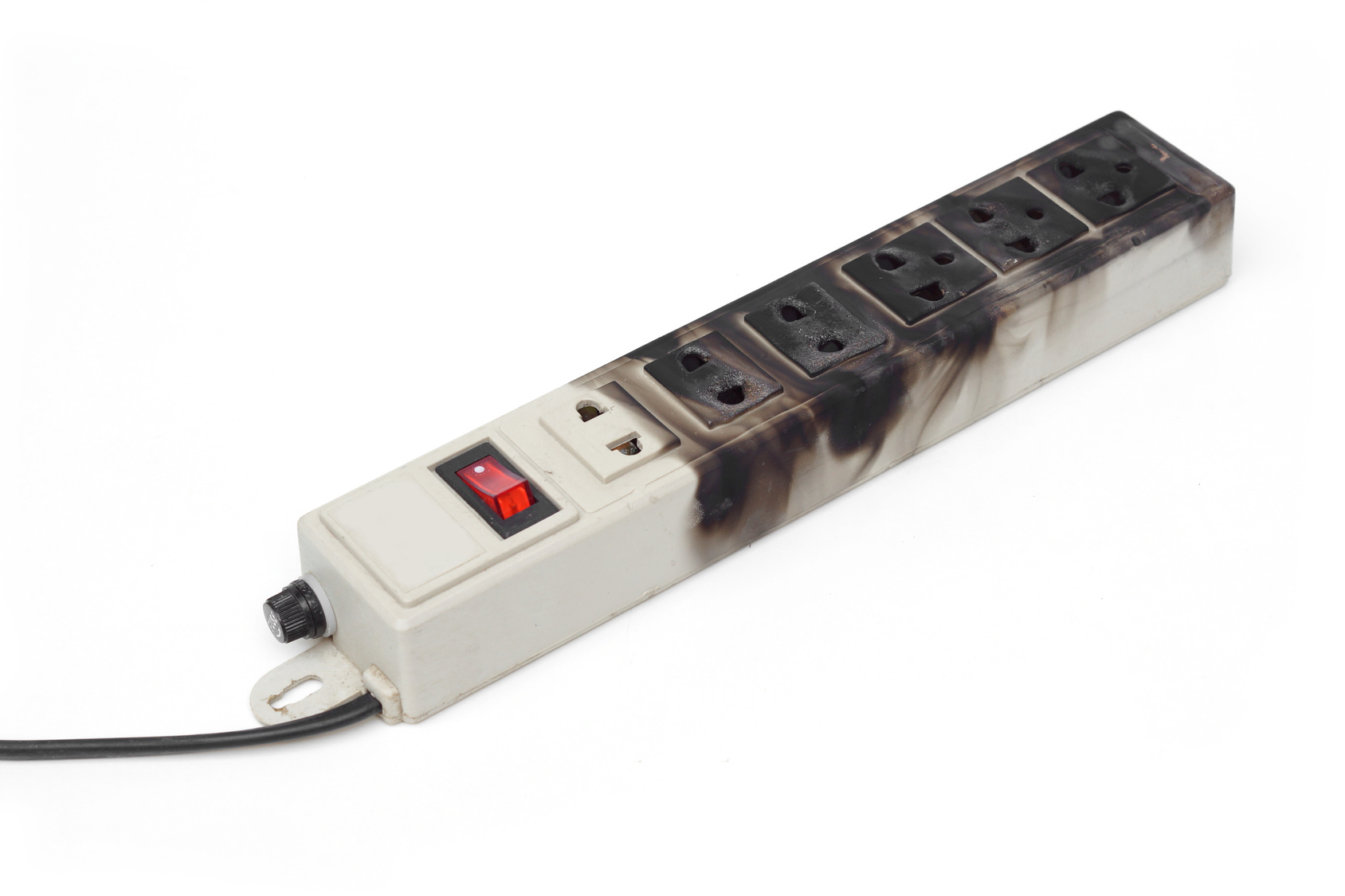

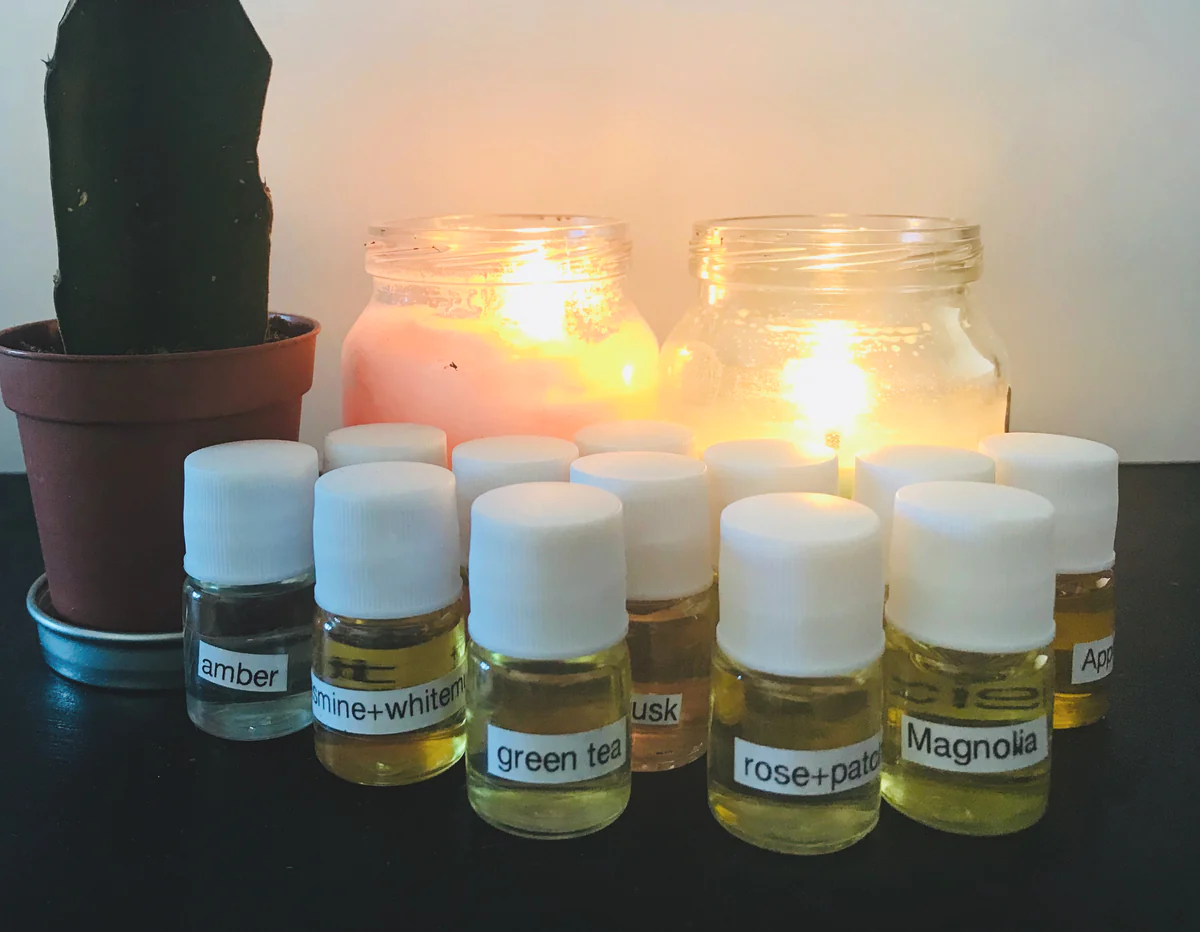
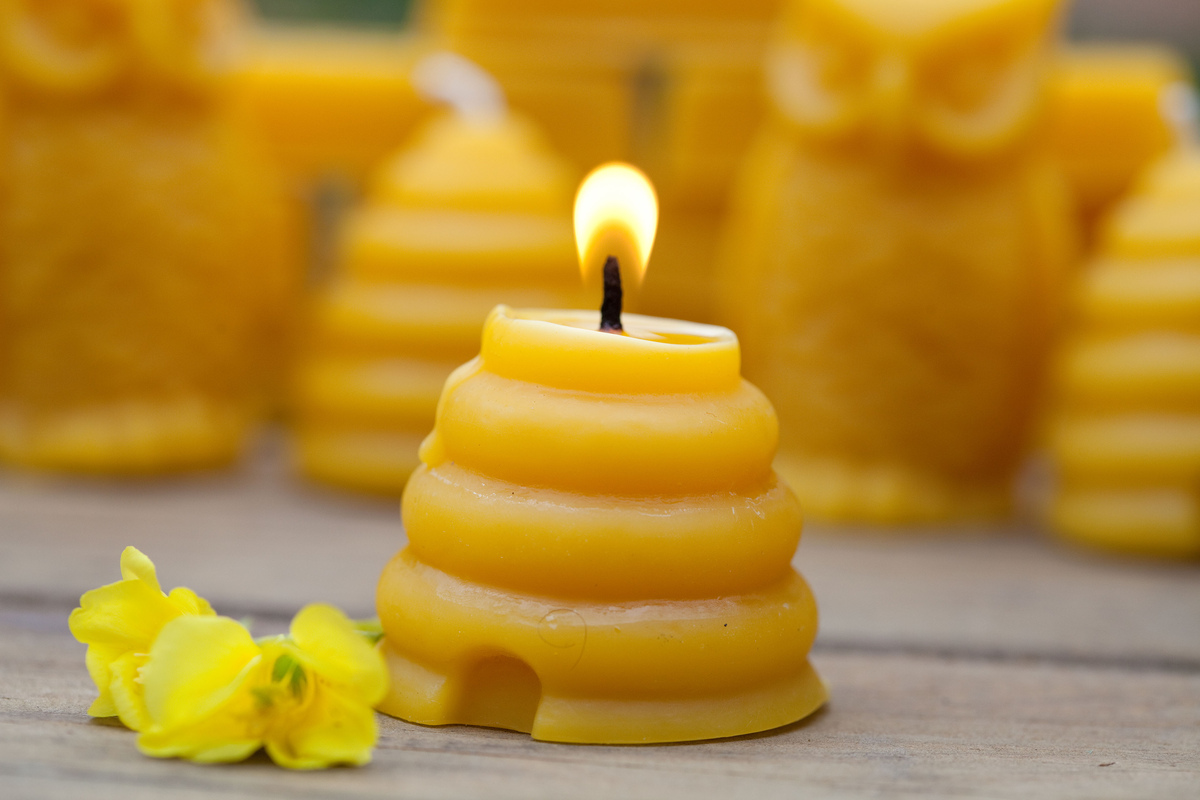




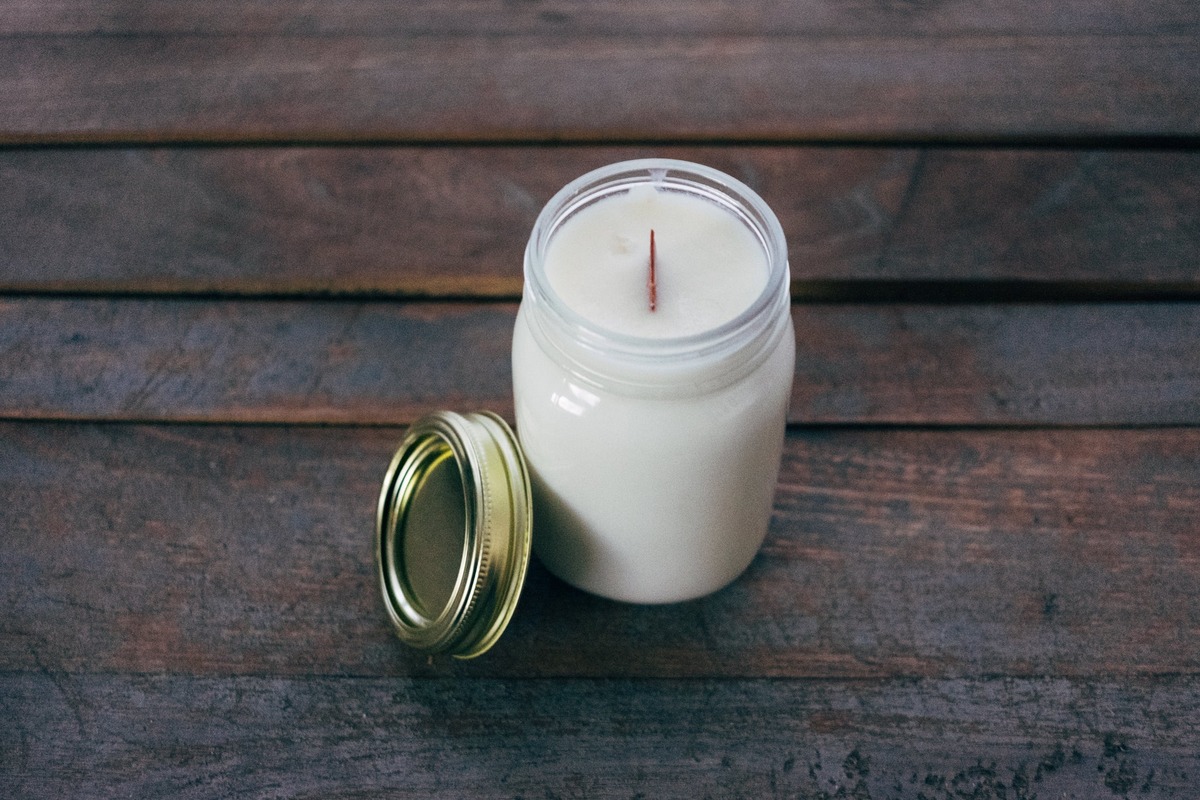

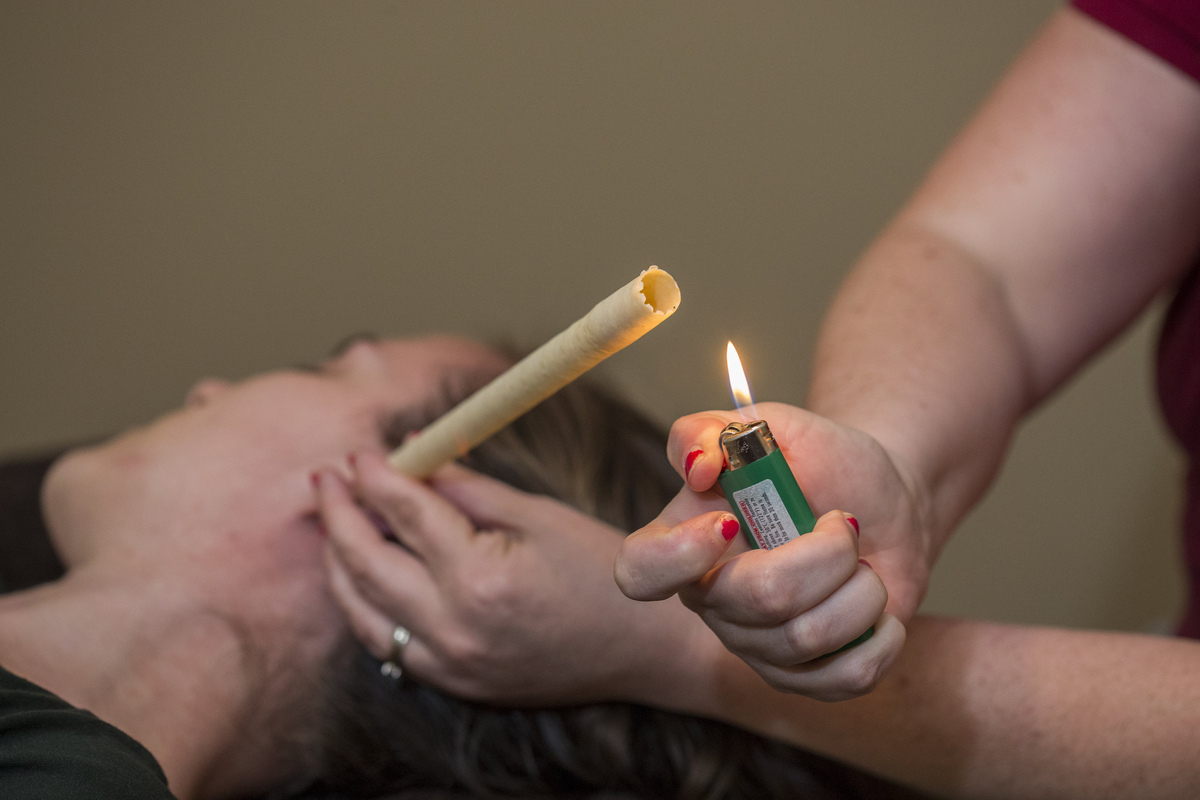


0 thoughts on “How Bad Are Candles For You”